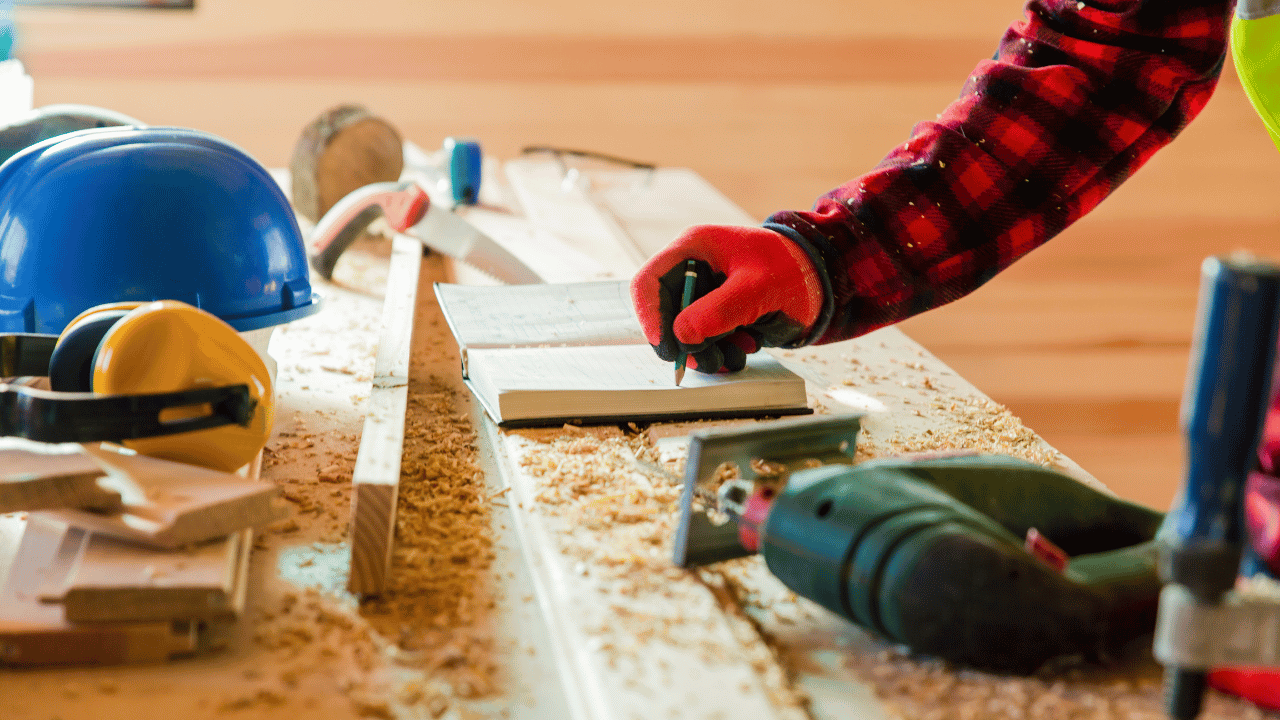Last Updated on October 10, 2023 by Pro Handyman Australia – Editorial Team
Carpentry stands as one of the world’s oldest trades. Delving into its depths offers not just an opportunity to connect with centuries of tradition but also to feel a unique sense of accomplishment and fulfillment. It bridges the gap between ancient craftsmanship and modern practicality.
The Therapeutic Nature of Woodworking
Beyond the tangible outcomes it yields, carpentry is a therapeutic endeavor. Engaging in the meticulous process of shaping wood can be both relaxing and enjoyable. It’s a creative outlet that provides a respite from the daily hustle and bustle, allowing individuals to find solace in the rhythmic dance of hammer and nails.
Self-reliance and Financial Savings
One of the undeniable benefits of carpentry is the potential for financial savings. By building items yourself, not only do you gain the satisfaction of creation, but you also save significantly. It’s a win-win that has both tangible and intangible rewards.
Craftsmanship for Everyone
Contrary to common perceptions, one doesn’t have to be inherently crafty to venture into carpentry. Success in this trade is often driven by patience and motivation rather than innate talent. So, if you’ve ever felt the call of the woodwork, know that it awaits you, eager to reveal its secrets.
The Essence and Art of Woodworking
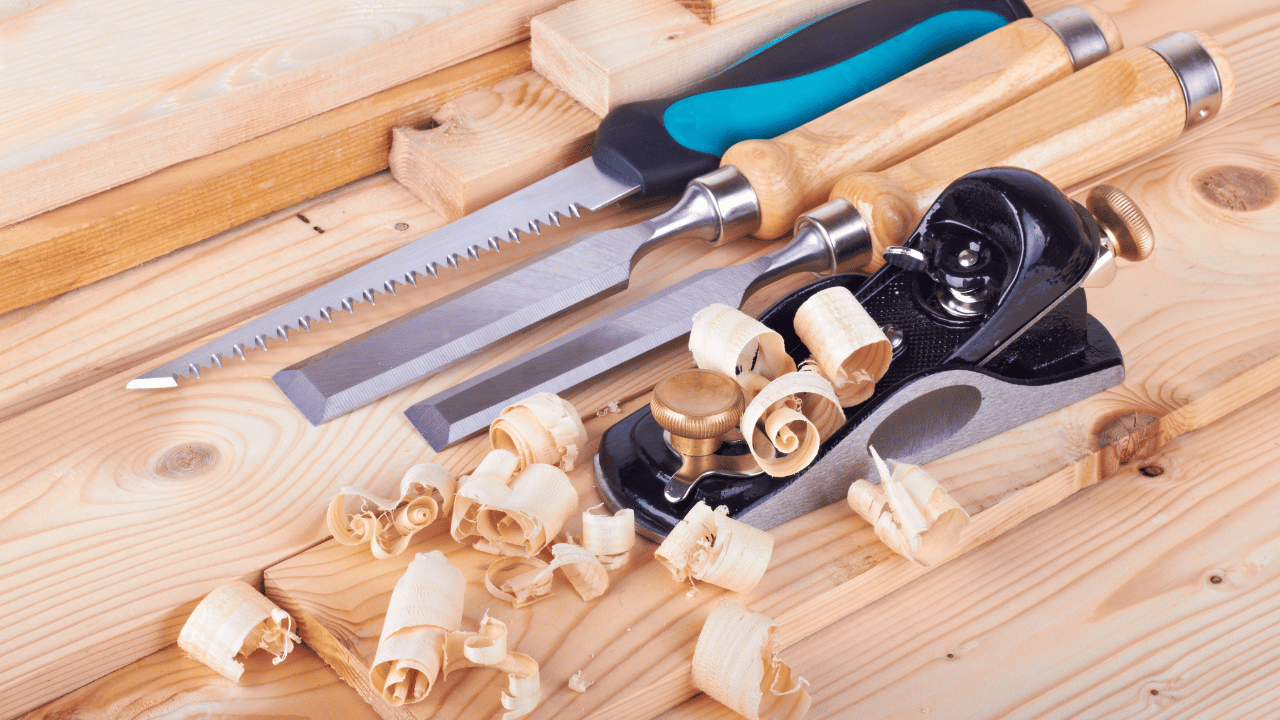
Grasping the Essence of Woodworking
At the heart of woodworking lies the intricate art of crafting diverse items using wood, facilitated by an array of specialized tools. It’s imperative for budding woodworkers to establish a solid grounding in this discipline, recognizing its subtleties and exploring its boundless possibilities. Such an understanding encompasses not just the basics, but also the refined aspects of the art.
Debunking the Initial Investment Myth
A prevalent misconception is that initiating a journey in woodworking demands a hefty financial outlay. Contrary to this belief, novices in the field don’t need to shell out vast sums to set the ball rolling.
Reveling in the Art of Transformation
The allure of woodworking stems from the profound pleasure it offers. Even though certain tasks, like restoration, might demand patience and time, the craft’s appeal among home renovation enthusiasts is undisputed. The exhilarating sensation of molding a simple lumber piece into a practical or ornamental item is a sentiment shared by many.
Finding Your Woodworking Path

Woodworking projects span a broad spectrum, from straightforward furniture crafting and general carpentry tasks to intricate wood carvings and turnings. As you embark on this journey, you’ll realize that mastering measurements, cuts, attachments, and assemblies takes time. But with basic tools and even rudimentary materials like scrap wood, a world of design possibilities unfolds. Whether you choose to pursue woodworking as a sporadic pastime or a rewarding profession depends entirely on your passion and commitment to the craft.
Essential Skills to Master

Carpentry is both a historical trade and a satisfying hobby that allows you to create and innovate. If you’re considering diving into the world of woodworking and carpentry as a hobbyist, acquiring a set of essential skills can set you on the right path. Here’s a rundown of the vital skills you’ll need to start your carpentry journey.
1. Understanding the Basics of Wood
Before picking up any tools, it’s essential to familiarize yourself with the material you’ll be working with most: wood.
- Different Wood Types: Learn about hardwoods, softwoods, and their various characteristics. Each type of wood has unique properties that make it suitable for specific projects.
- Wood Grain and Texture: Understanding how grain direction affects strength, appearance, and workability can significantly influence your project’s success.
2. Safe Tool Operation
Safety should always be a top priority.
- Power Tools: Learn the basics of operating drills, saws, and sanders. Ensure you understand safety precautions for each tool, such as wearing safety glasses and hearing protection.
- Hand Tools: Familiarize yourself with hand tools like chisels, planes, and hammers. Knowing when and how to use them will aid in precision and detail.
3. Measuring and Marking
They say in carpentry: “Measure twice, cut once.” Accuracy is crucial.
- Reading Measurements: Learn to read rulers, tape measures, and squares accurately.
- Marking Techniques: Understanding how to mark your wood for cuts, holes, or joins will ensure your pieces fit together perfectly.
4. Cutting and Shaping
Mastering cuts will be your bread and butter.
- Making Straight Cuts: Practice using a handsaw for manual cuts and a circular saw for powered cuts.
- Creating Angles and Curves: Learn to use tools like jigsaws and miter saws for varied shapes.
5. Joining and Assembly
Once your pieces are cut, you’ll need to put them together.
- Understanding Joints: Familiarize yourself with different joints such as dovetail, mortise and tenon, and butt joints.
- Using Fasteners: Understand when to use nails, screws, bolts, and other fasteners.
6. Finishing Techniques
A good finish can make or break a project.
- Sanding: Achieve smooth surfaces and edges using different grits of sandpaper.
- Applying Finishes: Learn about stains, varnishes, and paints to protect and beautify your work.
7. Planning and Designing
Before diving into a project, planning is essential.
- Reading Plans: Understand blueprints or project diagrams.
- Sketching Ideas: Even a rough sketch can guide your project and ensure a successful outcome.
Why Carpentry is a good hobby to have?
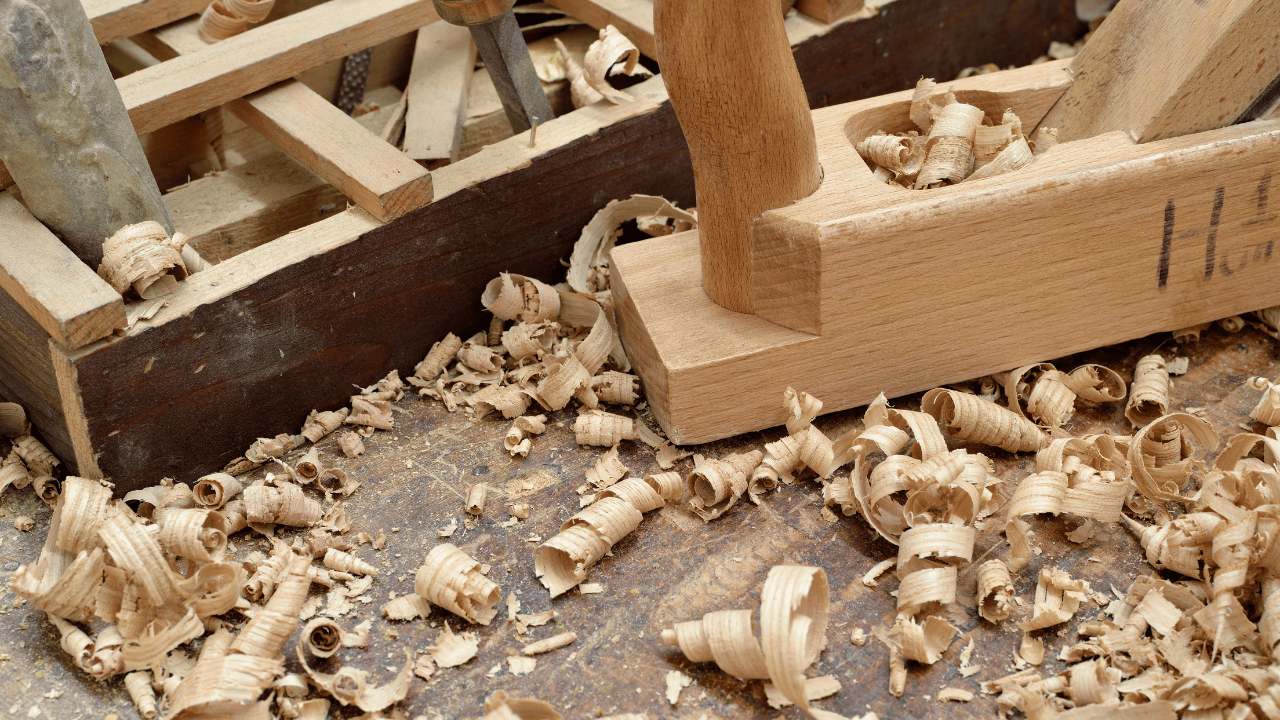
Have you ever thought about taking up carpentry as a hobby? If not, now’s the time to consider it. Carpentry, with its allure of handcrafted creations and the satisfaction of manual labor, is more than just a pastime. It’s a transformative experience that offers countless benefits. Let’s dive into the reasons why making carpentry your hobby might be one of the best decisions you’ll ever make.
1. A Tangible Connection to Creativity In our digital age, much of our work and creativity are intangible. Carpentry allows you to channel your creativity into something tactile. There’s an unmatched satisfaction in turning a simple piece of wood into a functional or artistic object. It’s a direct translation of your vision into reality.
2. Mental Health Boost Working with your hands and focusing on a project is meditative. The repetitive actions, the concentration on intricate details, and the slow but sure progression of a project can offer a form of mindfulness. This can significantly reduce stress and even combat symptoms of anxiety and depression.
3. Sustainable Living In a world of fast fashion and disposable products, carpentry encourages sustainability. Instead of discarding old or broken wooden items, you can restore or repurpose them. Building your own furniture ensures longevity and reduces the carbon footprint linked to mass production.
4. Skill Development Carpentry challenges and broadens your skillset. Whether it’s mastering a new tool, understanding wood types, or grasping advanced joining techniques, there’s always something new to learn. Over time, these skills can even translate into handy DIY home improvement tasks.
5. Physical Fitness Forget the gym; carpentry is a workout in itself! From sawing and chiseling to lifting and assembling, carpentry can improve your physical health by enhancing muscle strength, endurance, and dexterity.
6. Social Connections Carpentry is also a communal activity. There are numerous woodworking clubs, workshops, and online communities where hobbyists share tips, showcase projects, and collaborate. It’s an avenue to meet like-minded individuals and foster new friendships.
7. Financial Savings and Potential Income Starting as a hobby, carpentry can lead to substantial savings as you build your own furniture or make repairs. With experience, you might even sell your creations, turning a passionate hobby into a lucrative side hustle.
8. Legacy Building The things you create can last for generations. Whether it’s a beautifully crafted chair, a robust dining table, or a delicate wooden toy, these creations can be heirlooms passed down, ensuring a part of you lives on in these pieces.
Laying the Foundation for Carpentry
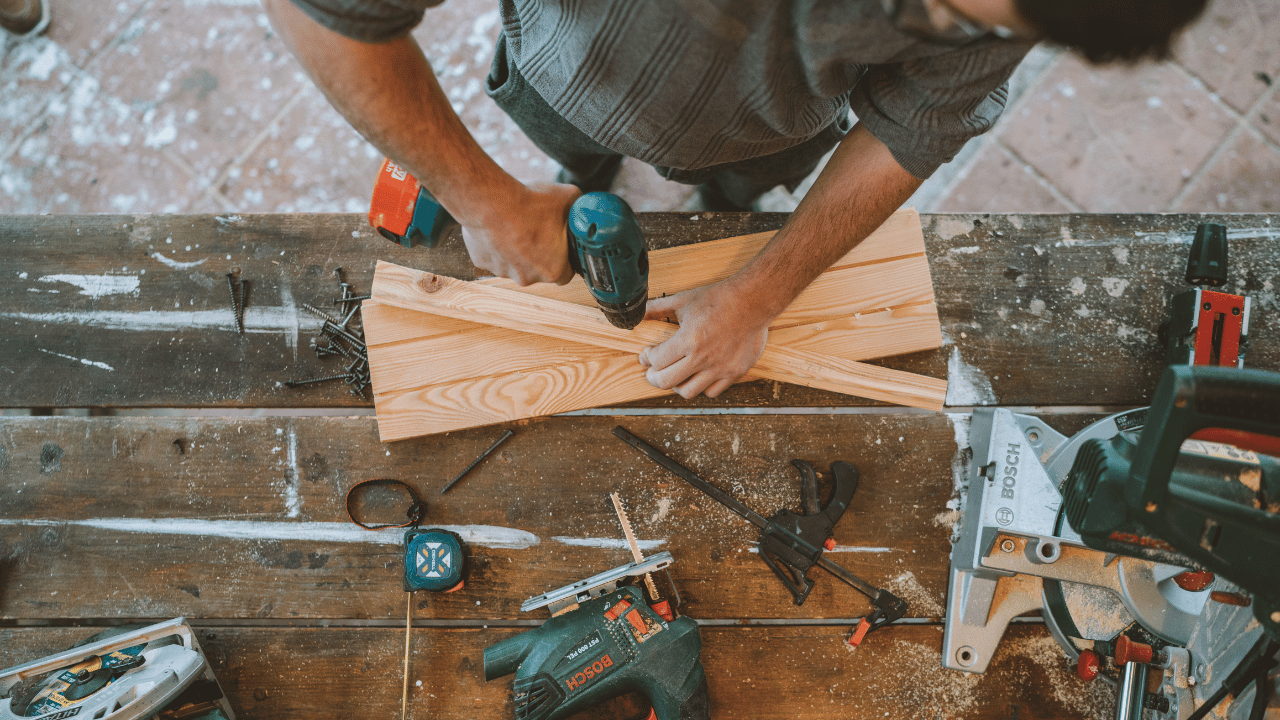
Acquiring Essential Knowledge Before diving headfirst into carpentry, it’s essential to have a grasp of the basics. The nature of carpentry demands physical exertion, and the use of power tools comes with inherent risks. Thus, a preliminary understanding is not just helpful but crucial.
It’s equally beneficial to contemplate your carpentry aspirations. Whether you’re keen on mastering simple tasks like setting up shelves or ambitious projects like designing your kitchen, having a clear vision can guide your learning journey.
Sharpening Mathematical Skills Enhancing your mathematical proficiency, especially in geometry, can significantly bolster your carpentry skills. A strong foundation in numbers and measurements will inevitably speed up your progress. While diving into intricate mathematical concepts isn’t required, a good grasp of basic measurements is indispensable. For those looking to refine their math skills, numerous resources, from websites like Popular Science to online courses, can prove valuable.
Exploring the Carpentry Landscape Embarking on your research is pivotal. Books and magazines offer a treasure trove of information on carpentry, not to mention a generous dose of inspiration. Various platforms, such as Newsstand, provide insights into popular woodworking and carpentry magazines tailored for diverse interests.
For a more visual understanding, online tutorials are an excellent resource. Platforms like YouTube are replete with insightful carpentry content, ranging from specific project tutorials to broader technique overviews. This visual medium provides a clearer picture, aiding in grasping complex procedures and witnessing the craft in motion.
Tool Essentials for Aspiring Carpenters

Starting Your Tool Collection While embarking on your carpentry journey, you may not possess an array of tools to begin with. However, it’s not essential to purchase an extensive kit immediately, especially if you’re testing the waters. A good starting point is to evaluate your current collection and identify key tools you might need. Carpenters employ a diverse range of hand and power tools, and the required tool varies based on the project. Yet, there are certain indispensable tools that are universally beneficial:
1. Carpenter’s Pencil & Sharpener: Contrary to popular belief, the carpenter’s most valued tool isn’t a high-powered gadget but a simple pencil. Essential for marking precise cuts on wood, a carpenter’s pencil is designed with a rectangular body to prevent it from rolling and to ensure a comfortable grip. Investing in a quality pencil is a smart move, considering its frequent use.
2. Tape Measure: Precision is the hallmark of excellent carpentry. A tape measure, ideally around 25 feet in length, balances usability and length for various tasks.
3. Hammer: Beyond merely hammering nails, this versatile tool has varied applications such as removing nails, positioning wood, and even blunting nail ends. A claw hammer stands out as a versatile choice.
4. Saws: As your skills advance, mastering the use of different saws becomes essential. Starting with a hand saw can help beginners gauge how wood reacts to the blade. This foundational knowledge is pivotal before transitioning to power saws.
5. Chisels: Equally significant as saws, chisels find their use in carving wood and refining joints. Purchasing a quality set, especially sizes 5-7, is beneficial for a range of projects. It’s worth noting that wooden handles are often the most ergonomic.
6. Screwdrivers: An essential component of any toolbox, it’s wise to have both flathead and Phillips head screwdrivers in varying sizes.
7. Screws and Bolts: The right screw or bolt can greatly influence the outcome of a project. Familiarizing oneself with various types, like wood screws or sheet metal screws, is advantageous.
8. Marking Knife: This tool is crucial for delineating precise cutting points, aiding in achieving clean cuts.
9. Clamps: To maintain stability while working on wood, clamps are vital. They ensure the material stays in place, preventing any unintended movement.
10. Workbench: The foundation of all carpentry tasks, a sturdy workbench is non-negotiable and will be elaborated upon subsequently.
Designing Your Ideal Carpentry Workspace

The Necessity of a Proper Workbench Diving into carpentry necessitates a conducive workspace. While many believe that an expansive garage or basement is essential, the reality is more accommodating. A significant consideration is investing in a sturdy workbench; substituting it with something like a kitchen table isn’t advisable. For novices, the design specifics of the workbench might be secondary, but its sturdiness, able to bear significant weight, and an integrated vice are paramount.
For those who relish the idea of outdoor carpentry, opting for treated workbenches that withstand external conditions is ideal. The advantages of working outdoors include ample lighting and ventilation, enhancing the crafting experience.
Conversely, an indoor dedicated workspace for carpentry offers flexibility in workbench selection. Several retailers offer a vast array of indoor and outdoor workbenches. It’s wise to explore these options or even seek advice from experts to find the perfect fit.
Prioritizing Organization and Safety Amid the enthusiasm of starting carpentry, it’s easy for novices to overlook workspace tidiness. Yet, a clutter-free environment is instrumental. Carpentry inherently produces debris like wood shavings and sawdust. Maintaining a neat workspace not only enhances focus but also reduces distractions and potential hazards.
Efficient organization elevates the woodworking experience, instilling confidence and fostering a passion for continued practice. Furthermore, safety should be a top priority. Ensuring the workspace is free from potential trip hazards, especially cords and extension leads, is indispensable.
Overcoming Initial Apprehensions Having procured your tools and set up your workstation, the subsequent step involves familiarizing yourself with these instruments. It’s common for beginners to harbor apprehensions about using sharp, heavy, or powered tools. Such hesitations, however, can ironically lead to a higher risk due to uncertain handling.
If anxiety surrounding tool usage inhibits your growth or deters you from undertaking intricate projects, seeking guidance is invaluable. Leveraging instructional videos, or consulting experienced carpenters, whether acquaintances or professionals, can demystify techniques and bolster confidence. Local hardware stores often serve as knowledge hubs, and engaging with community carpentry groups or attending adult education courses can also provide collaborative learning opportunities.
Embracing the unfamiliarity and occasional nerves is a natural part of your carpentry evolution. Embrace it and persevere.
The Art of Hammering Before delving into intricate projects, acclimatizing to the feel of each tool is essential. A foundational skill, like hammering a nail, is an ideal starting point. While it may seem rudimentary, mastering the correct hammering technique is pivotal. Proper hammering ensures the wood remains intact, reduces chances of accidental injuries, and emphasizes precision over brute force. Remember, when it comes to carpentry, it’s the finesse that often makes a difference.
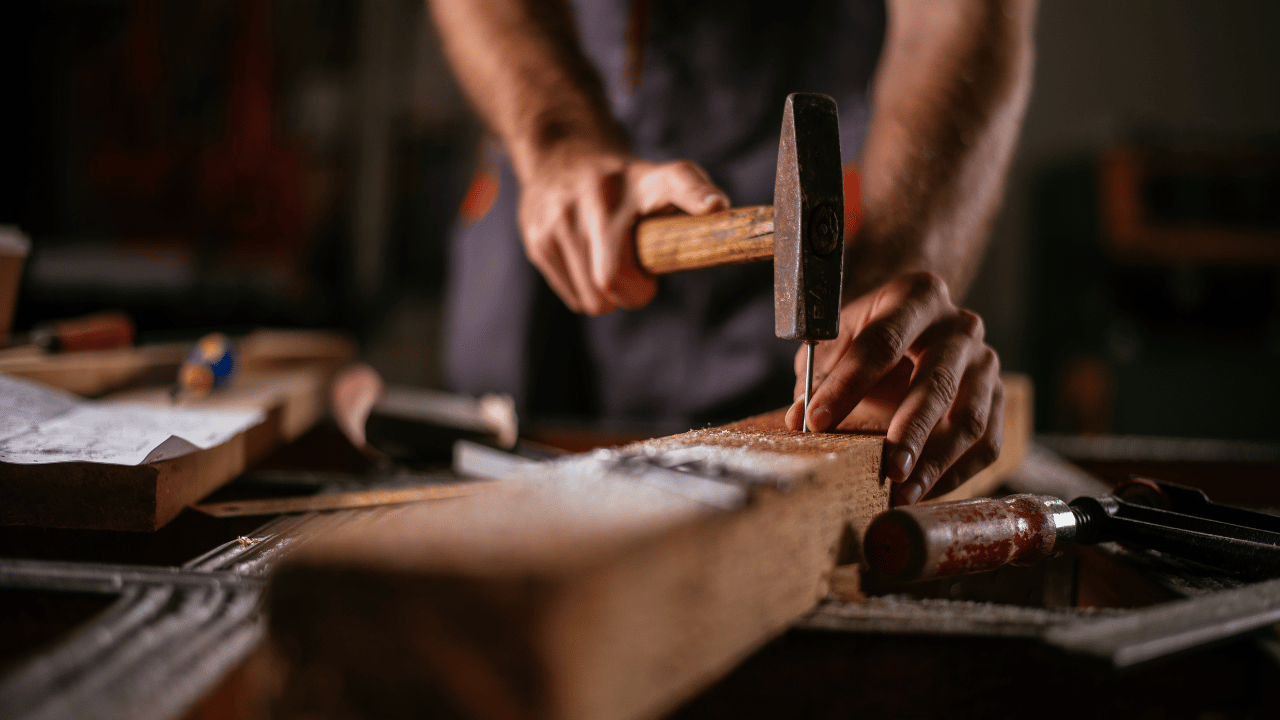 Mastering the Art of Measurement Before venturing into the world of sawing, dedicating time to perfect your measuring skills is essential. Every carpentry project, irrespective of its scale, requires meticulous measurement and basic calculations to determine the correct dimensions. A minor measurement error can drastically impact the project’s outcome. For guidance on precise measurement and marking, you might want to explore instructional videos available online.
Mastering the Art of Measurement Before venturing into the world of sawing, dedicating time to perfect your measuring skills is essential. Every carpentry project, irrespective of its scale, requires meticulous measurement and basic calculations to determine the correct dimensions. A minor measurement error can drastically impact the project’s outcome. For guidance on precise measurement and marking, you might want to explore instructional videos available online.
Perfecting Your Sawing Technique A challenge many budding carpenters encounter is achieving straight cuts. With a steady workbench, appropriate clamps, and the right technique, you can ensure precision in your saw lines. After marking your wood:
- Rest the saw blade on the marked line at a 45-degree angle.
- Place your index finger alongside the blade for stability during the initial cut, and firmly grip the saw handle.
- Use your free hand for additional support and employ full strokes with the saw, adhering to the principle: “Let the saw do the cutting.”
Introduction to Power Tools Prior to commencing any project, familiarizing yourself with power tools, if they’re part of your toolkit, is imperative. These tools, while requiring caution due to their potential hazards, can be incredibly rewarding and efficient when used correctly.
Power drills often serve as the initial introduction to power tools for beginners. These come in various models, and before using one, it’s crucial to understand its operation. Engaging with instructional videos or seeking insights from seasoned carpenters can be invaluable. For those curious about the most suitable power tools for novices, there are many informative online resources available. It’s worth noting that while cordless power tools offer enhanced convenience and safety, they often come with a higher price tag. It’s also essential to ensure quality, as inexpensive models might compromise on battery longevity.
Starting Simple and Building Confidence Once you feel poised to delve into hands-on work, it’s time to revel in the art of creation. As you commence your carpentry journey, it’s prudent to gravitate towards straightforward projects. Engaging in such tasks not only acquaints you with foundational carpentry techniques but also instills an appreciation for minimalist design.
Although these beginner projects might seem elementary, they serve as effective confidence boosters, reinforcing pivotal carpentry competencies. As your prowess develops, you can transition to intricate endeavors, such as revamping decks or crafting chairs.
For inspiration, there are numerous online platforms showcasing beginner-friendly projects. Ranging from crafting chic coffee tables using repurposed pallets, designing snug shelters for pets, to fashioning elegant cutting boards, there’s a plethora of options catering to diverse interests.
Beginning with the Basics Once you’ve mustered enough confidence to dive into carpentry, it’s time to transition from theory to practical application. For novices, it’s advisable to kick-start the journey with elementary projects. This approach not only acquaints you with the fundamental principles of carpentry but also fosters an appreciation for minimalistic designs.
While these starter projects might seem rudimentary, they are instrumental in bolstering self-assurance and honing quintessential carpentry techniques. As you become adept, you can venture into intricate undertakings, such as rejuvenating decks or fabricating chairs.
For those seeking initial inspiration, there are online resources that showcase beginner-friendly projects. Whether it’s repurposing old pallets into stylish coffee tables, crafting snug shelters for pets, or designing refined cutting boards, there’s a myriad of opportunities to explore and create.
Conclusion
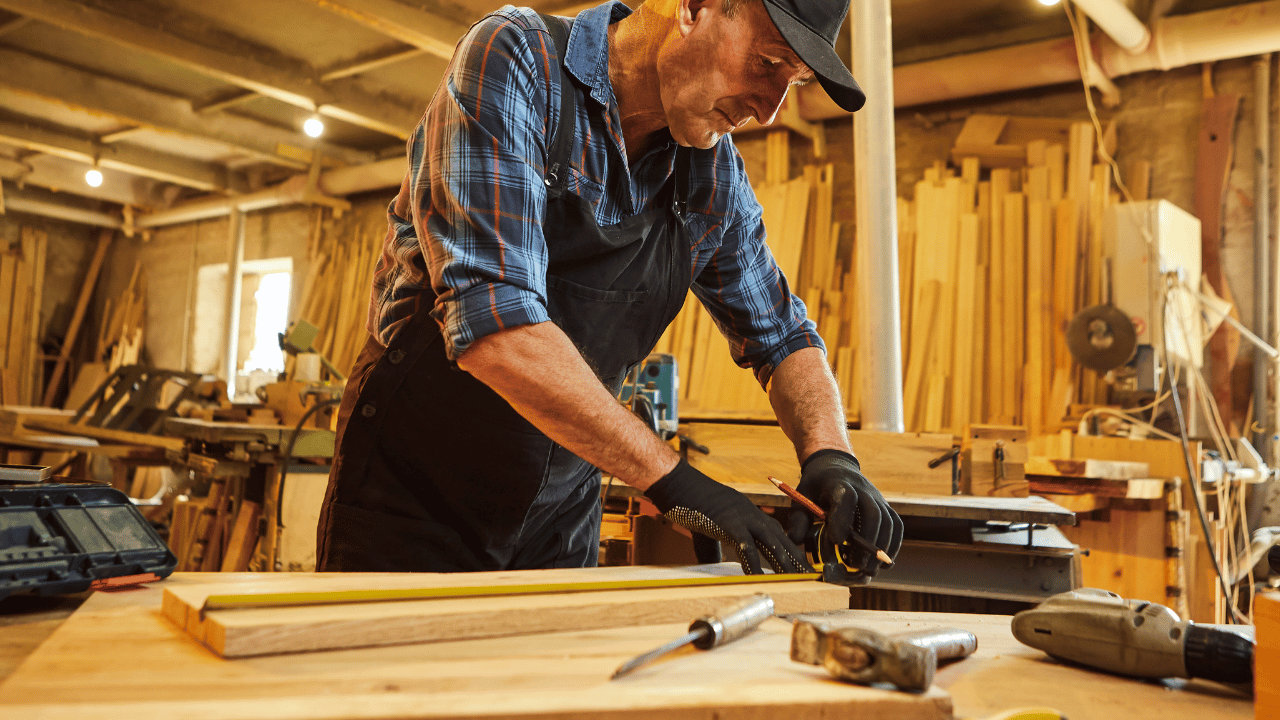
Carpentry is more than just a hobby; it’s a journey of self-discovery, creativity, and connection to the environment. While it offers a plethora of practical benefits, the joy, satisfaction, and sense of accomplishment it brings are unparalleled. So, the next time you’re pondering a new hobby, give carpentry a whirl. The world of wood awaits!
